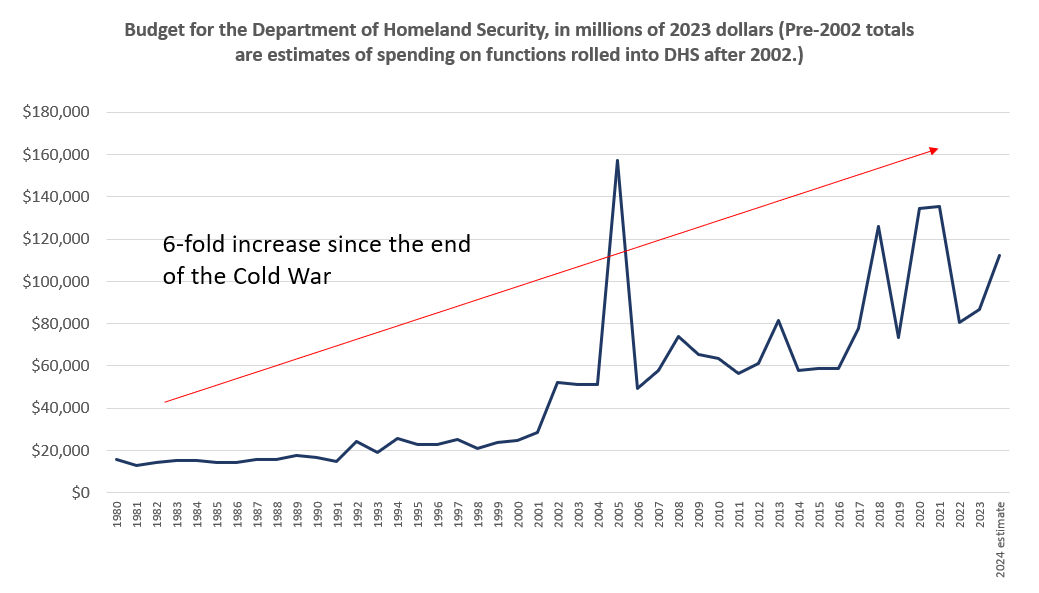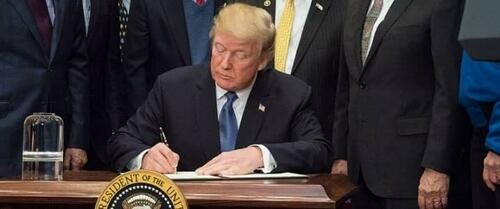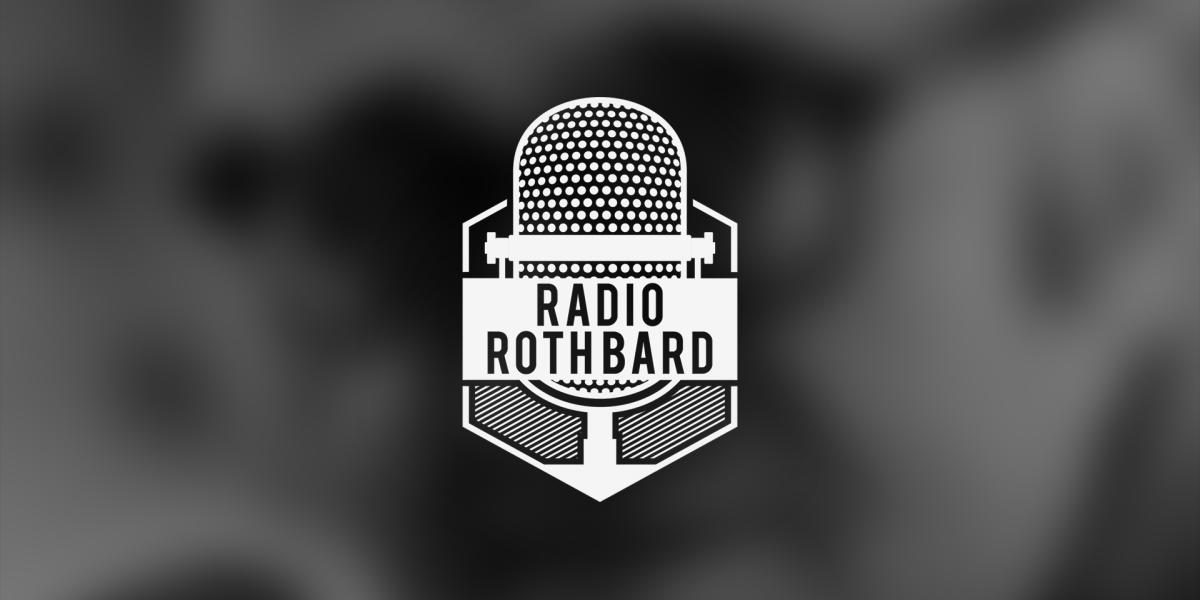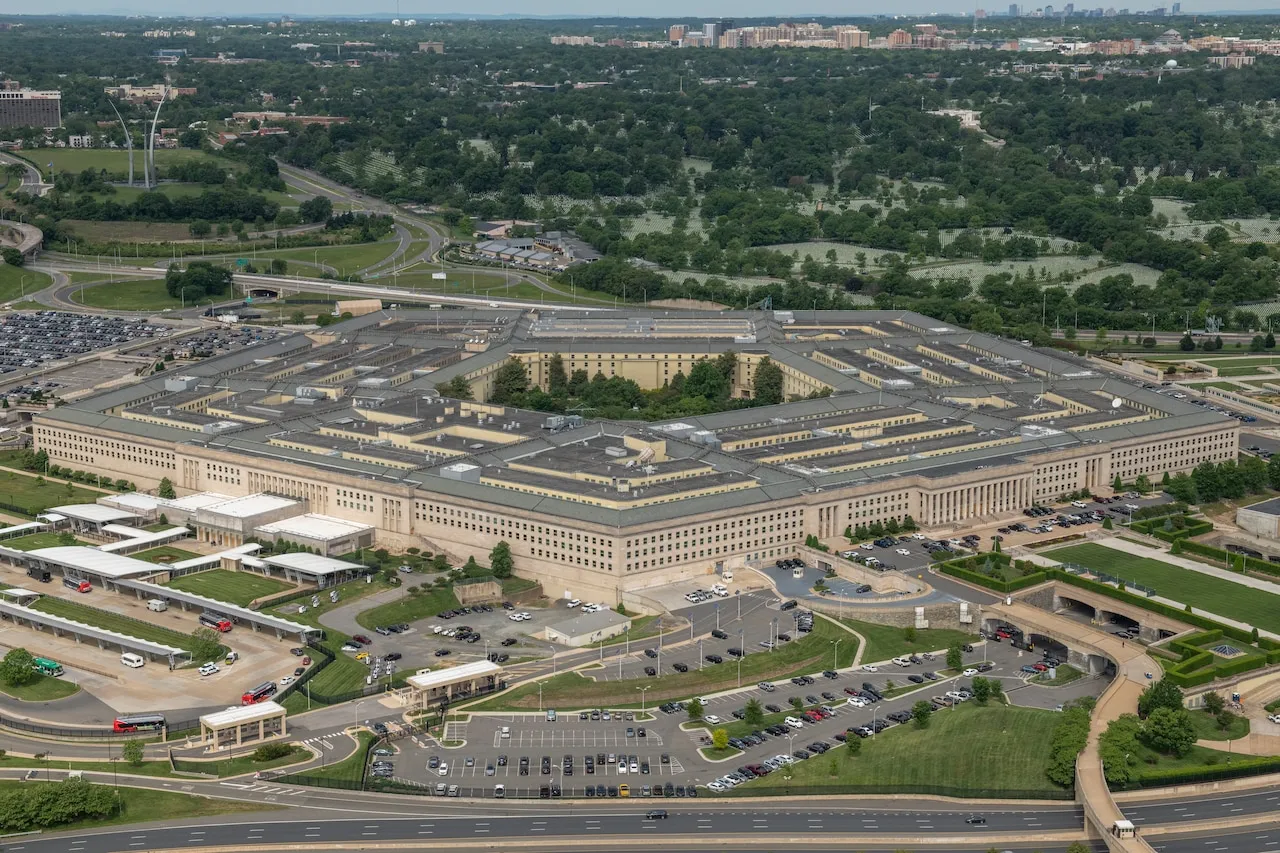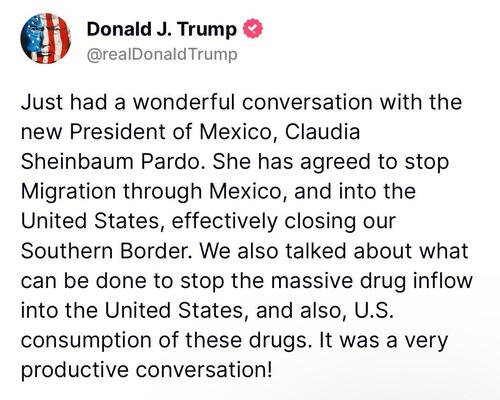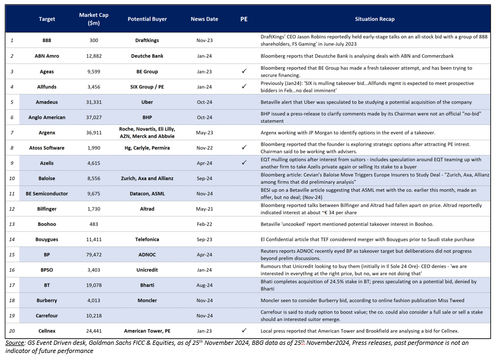French prosecutors seek to ban Marine Le Pen from running again for president
“I think the prosecution’s wish is to deprive the French people of the ability to vote for whom they want,” Le Pen told reporters.
Lord of the Rings IP Profits DROP | Is Rings of Power To Blame For The Losses?
Variety reveals that the Lord of the Rings IP lost money last quarter…could Rings of Power be to blame, with its abysmal first season and continuing canon violations? #lordoftherings #ringsofpower #amazonprime
My friends, I would be honored if you would please subscribe and help us save Pop Culture! And if you really enjoy our content, please consider becoming a CHANNEL MEMBER! Members get access to custom emojis, exclusive UNCENSORED member's only videos updated weekly, and exclusive Arch Villain livestreams where you can speak directly to Doomcock!
Go to https://www.youtube.com/overlorddvd and click the JOIN button right next to the SUBSCRIBE button, and aid us in our fight against these cultural vandals!
Folks, I would also be honored if you would consider supporting me on Patreon or Subscribestar! You get access to years of exclusive content, and folks who sign up at the Legionnaire level get a signed photo of Doomcock with a personal message, a Membership Card on metallic cardstock, and a certificate of supervillainy! Harvey's podcasts there are my personal favorites, along with full-length movie DVD Commentaries of films like Blade Runner and Star Trek II: Wrath of Khan! Plus I post links there to all my videos and livestreams, since YouTube isn't good at getting the word out! HELP US SAVE POP CULTURE BY JOINING TODAY!
patreon.com/doomcock
subscribestar.com/doomcock
Abolish the Department of Homeland Security
This might sound radical or extreme, but the US somehow managed to get along for more than 225 years before this department was created.
Gaetz Resigns ‘Effective Immediately’ After Trump AG Pick; DC In Full Blown Panic
from ZeroHedge: Update (1905ET) According to House Speaker Mike Johnson, Gaetz has resigned effective immediately. “I think out of deference to us, he issued his resignation letter effective immediately, of Congress,” said Johnson. “That caught us by surprise a little bit. But I asked him what the reasoning was, and he said, well, you can’t have too […]
Three Key Energy Moves Trump Plans For His First 100 Days
Three Key Energy Moves Trump Plans For His First 100 Days
Authored by Simon Watkins via OilPrice.com,
-
Trump plans to prioritize increasing U.S. oil and gas production by removing federal drilling restrictions, which could lead to lower energy prices.
-
Trump may look to negotiate an end to the Russia-Ukraine war with a settlement that secures disputed regions for Russia.
-
Trump is likely to support Israel in taking action against Iran’s nuclear program, aiming to strengthen U.S.-Middle East alliances and counter China’s influence in the region.
Crucially for President-Elect Donald Trump’s second term in office, he will have considerable personal influence over the Senate (in which his Republican Party now holds a majority), and over the Supreme Court (where conservatives hold a six-to-three majority). His Party – and few can argue that it is now truly that – has also now secured a majority in the second of the two institutions of Congress, the House of Representatives, giving the re-elected President will have a once-in-a-lifetime chance to push through whatever legislation he wants, especially in the traditional honeymoon period of the first 100 days in office.
Three areas that he is likely to address in this period will have enormous ramifications for the global energy sector and the key countries that constitute its core.
One of these areas will be moves to increase the U.S.’s oil and gas production, as stated in several of Trump’s campaign speeches and documented in his ‘Trump Agenda47’.
Broadly, he will, “…set a national goal of ensuring that America has the No. 1 lowest cost of energy of any industrial country anywhere on Earth”. He added that to “keep pace with the world economy that depends on fossil fuels for more than 80 percent of its energy, President Trump will DRILL, BABY, DRILL”. He also highlights that he will, “end Biden’s delays in federal drilling permits and leases that are needed to unleash American oil and natural gas production”. This is likely to include the removal of much of the previous Presidential Administration’s pausing of key liquefied natural gas export permits. The likely net effect of this on oil and gas prices will clearly be bearish.
Another move Trump is likely to make in the first 100 days will be pushing for a negotiated settlement in the Russia-Ukraine War.
During his campaigning, the President-Elect repeatedly stated that he could end the war “in 24 hours” based on two key dealmaking tactics delineated in an interview with Fox News in July 2023. First, he would tell Russian President Vladimir Putin that if he did not make a deal with Ukraine then the U.S. would dramatically increase the scale and scope of its aid to the war-torn country. As a senior global security source who worked closely with Trump’s first Presidential Administration exclusively told OilPrice.com last week, this would include long-range sophisticated missiles being given to Kyiv and the permission to use them deep inside Russian territory that was ‘active’ in its war against Ukraine. Second, he would tell Ukrainian President Volodymyr Zelenskiy that the U.S. would withhold all aid to it unless Kyiv negotiated a deal with Moscow. The starting point for the deal itself that Trump has in mind, according to the source, is one in which Russia retains the original disputed territories of Luhansk and Donetsk, in addition to keeping Crimea which was annexed during the 2014 invasion. The other major territories in the southeast – Kherson and Zaporizhzhia – plus other areas in the northeast occupied by Russian forces, would form part of a demilitarised zone between the two nations.
Trump can see an additional benefit in this plan, which is based on the premise of countries ultimately being responsible for ensuring their own security. This is that the European countries of the North Atlantic Treaty Organisation (NATO) will infer from it that they must finally assume more of the spending burden of the security alliance with the U.S. to ensure the defence of their own borders. Trump has long made it clear that he thinks European countries should spend at least 2.5% of their annual gross domestic product (GDP) on defence, with the U.S. having spent 3.6% of GDP in this way last year. Over the same period, only Greece managed this minimum 2.5% requirement (at 3.23%) with Great Britain second (at 2.33%). The longstanding de facto economic leader of the European Union of 27 countries was near the bottom of the list, at just 1.52%.
That said, the combination of a negotiated settlement ending the Russia-Ukraine War and the implicit obligation to spend at least 2.5% of GDP on defence every year might prompt a gradual fracturing in the already uneasy political cohesion of the European Union towards punishing Russia for its aggression against Ukraine. Many European economies have buckled in recent years from the effects of Covid, surging inflation caused by soaring energy prices after Russia’s invasion of Ukraine and competition from China in key sectors. These elements may convince any new German government (following the recent collapse of its governing coalition) that resuming the cheap and plentiful supplies of energy from Russia upon which it built much of its economic wealth over the previous two decades is a necessary step to its financial recovery. Russia, for its part, will be more than happy to accommodate it, beginning with the extension of gas exports to Europe via Ukraine at the end of this year.
The third measure that Trump is likely to take in his first 100 days as President will be giving the nod to Israel to do whatever it wants with Iran.
It should be remembered that it was Trump’s belief that Iran was using the ‘Joint Comprehensive Plan of Action’ (JCPOA, or colloquially ‘the nuclear deal’) cynically to quietly build up its nuclear weapons programme from money accrued through increased trade and investment made possible by the deal, as analysed in full in my latest book on the new global oil market order. That was why the U.S. unilaterally pulled out of the deal in May 2018. It was also Trump who said on 4 October that “Israel should hit the [Iranian] nuclear [facilities] first and worry about the rest later.” He added – in response to Biden’s flat ‘no’ on Israel striking Iran’s nuclear sites — “That’s the craziest thing I’ve ever heard. That’s the biggest risk we have. The biggest risk we have is nuclear … Soon they’re going to have nuclear weapons. And then you’re going to have problems.” Removing – or at least severely downgrading – Iran’s nuclear threat would allow the Trump Presidential Administration to reassert its authority with several major Arab states, most notably Iran’s historical nemesis in the region, Saudi Arabia. This could be done through the re-start of the relationship normalisation deals that the previous Trump government orchestrated between Arab states and Washington’s principal Middle Eastern ally Israel that began in 2020 with the UAE, as also detailed in my latest book. The resuscitation of these types of deals is something Trump has already signaled as being a key priority for his new Administration. Doing this, in the aftermath of a major Israeli strike on Iran’s nuclear weapons development programme, would have the corollary benefit for Trump of derailing China’s efforts since 2018 especially to replace the U.S. as the leading superpower in the vital global oil and gas region of the Middle East. It would also enable the U.S. to resume the sort of cooperation with Saudi Arabia and OPEC that kept oil price within the ‘Trump Oil Price Range’ for virtually the entirety of his previous presidential term.
Tyler Durden
Thu, 11/14/2024 – 06:30
What Trump’s New Political Appointees Are Telling Us
Ryan and Tho examine the role that ideology and interest groups will have on Trump’s administration and on his political appointees.
Israel warfare methods ‘consistent with genocide’: UN committee
Israel’s warfare in Gaza is consistent with the characteristics of genocide, a special UN committee said Thursday, accusing the country of “using starvation as a method of war”. Israel’s warfare practices in Gaza “are consistent with the characteristics of genocide”, the UN Special Committee to investigate Israeli practices said, pointing to the “mass civilian casualties […]
The post Israel warfare methods ‘consistent with genocide’: UN committee appeared first on Insider Paper.
Subjectivity and Demonstrated Preference: A Possible Paradox
A few years ago, I bought a unique item. When I first became aware of it, I was intrigued and interested, but the price was $50 more than I was…
Will Trump be the anti-war president he promised or will he cave to the neocons who control the Washington Uniparty?
by Leo Hohmann, Leo’s Newsletter: I’ve done the math and it’s not promising in terms of what Trump will encounter when/if he seriously tries to end the wars in Ukraine and Middle East. Donald Trump made a lot of promises about negotiating peace in Europe and avoiding World War III, but will he be able […]
Virginia Family’s EZ-Pass Charged $576 After Driving RV Just 45 Miles On State Toll Road
Virginia Family’s EZ-Pass Charged $576 After Driving RV Just 45 Miles On State Toll Road
It’s easy to laugh off people who constantly complain that the government is watching their every move and has hands in their wallets. Then, you stumble upon a story like Jeff Landry’s.
When Landry set off for a camping trip with his family near Virginia’s Luray Caverns in early October, he expected to pay some tolls – especially because he had his RV.
Traveling from Falls Church with his wife and youngest child following in a minivan, they took I-66’s express lanes during peak hours, expecting to pay $30 or so each way in tolls. But to his surprise, when the EZ-Pass charges appeared days later, the bill totaled an eye-popping $569.50 for the roundtrip, according to MSN/MotorBiscuit.
At first, Jeff thought the bill was a mistake, but after checking the toll website, he realized it was accurate.
The MSN/MotorBiscuit writeup says that his three-axle RV was charged a premium due to its size, but $569.50 for a 22-mile round trip felt excessive to him. He hadn’t anticipated how much dynamic pricing could drive up tolls for larger vehicles during peak hours.
It turns out…the I-66 express lanes, managed by I-66 Express Mobility Partners, adjust toll rates based on traffic demand, charging drivers more to bypass congestion.
Larger vehicles, like Jeff’s 1997 Holiday Rambler RV, incur even higher tolls due to their size and road impact. According to a toll operator’s spokesperson, Jeff’s RV wouldn’t even qualify to use certain other toll lanes in Virginia, so the high charges are firm.
The writeup notes that drivers unfamiliar with toll pricing can easily misjudge costs, as Jeff did.
It says to avoid similar surprises, plan your trip to avoid peak hours, when toll rates are highest; traveling during off-peak times can significantly reduce toll charges. Additionally, check your vehicle’s toll classification, especially if you’re driving a larger, multi-axle vehicle, which typically incurs higher tolls. Lastly, explore alternative routes.
While non-express lanes may add some travel time, they can save large vehicle drivers hundreds of dollars. For Jeff, the express lane shaved only 20 minutes off his trip—an advantage that, in retrospect, didn’t justify the steep toll.
Or, maybe just stay home next time…
Tyler Durden
Wed, 11/13/2024 – 23:00



